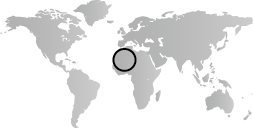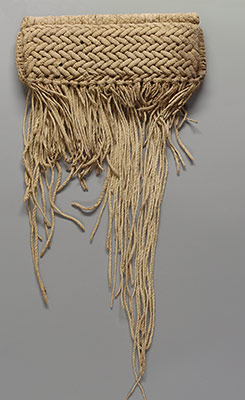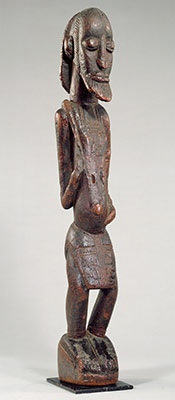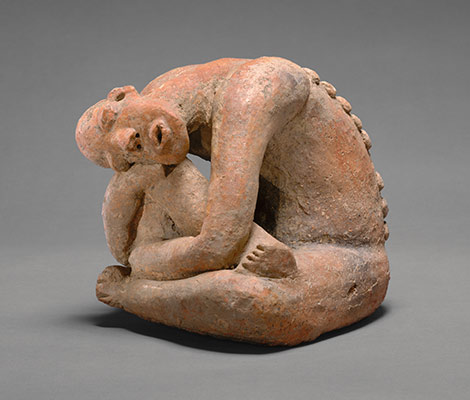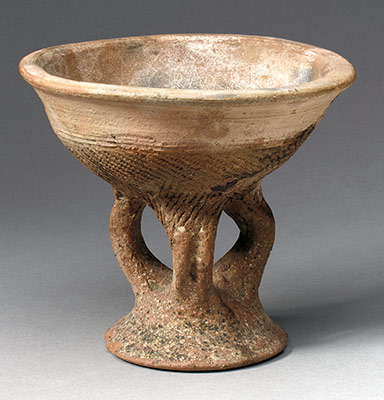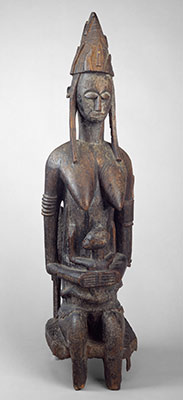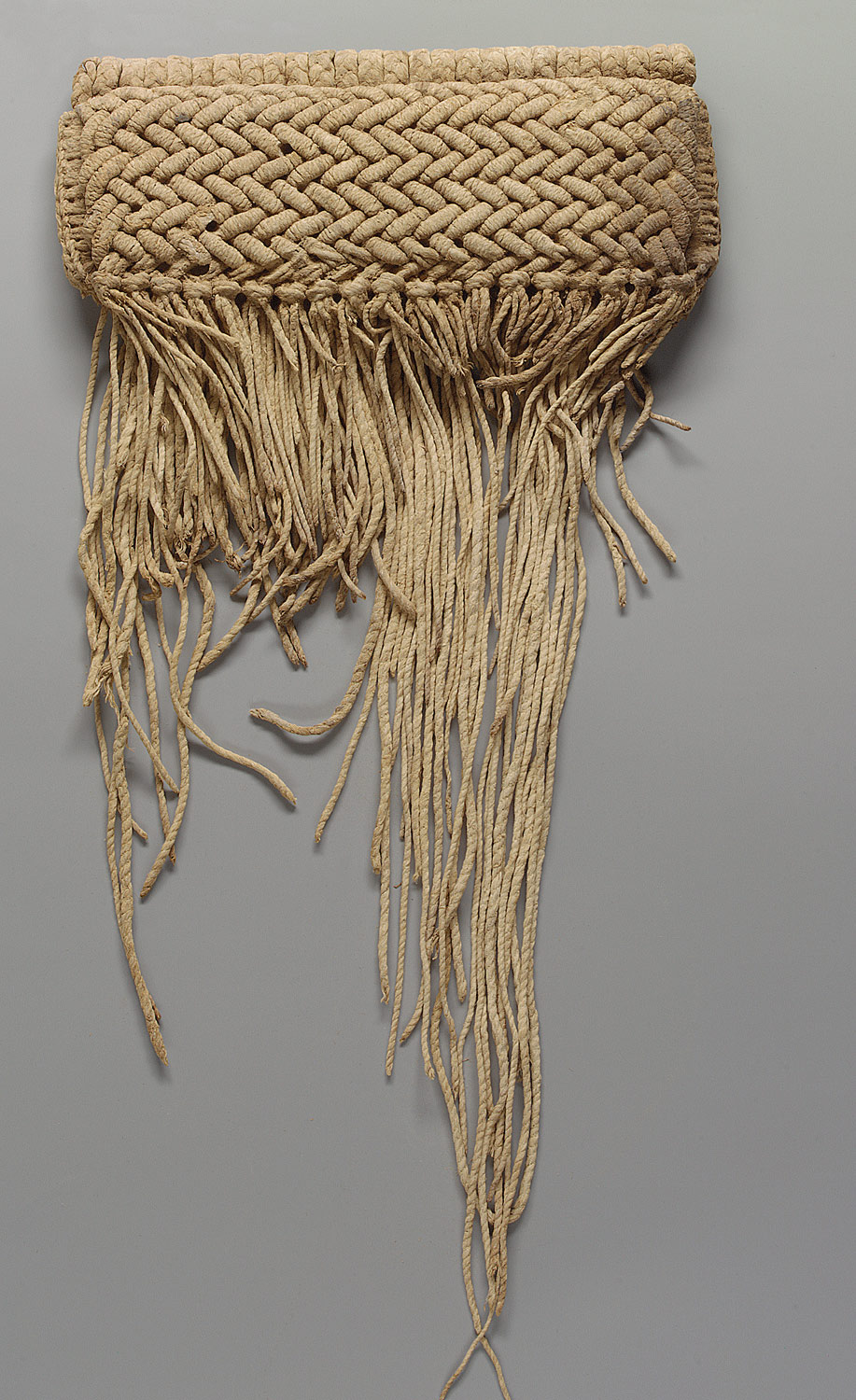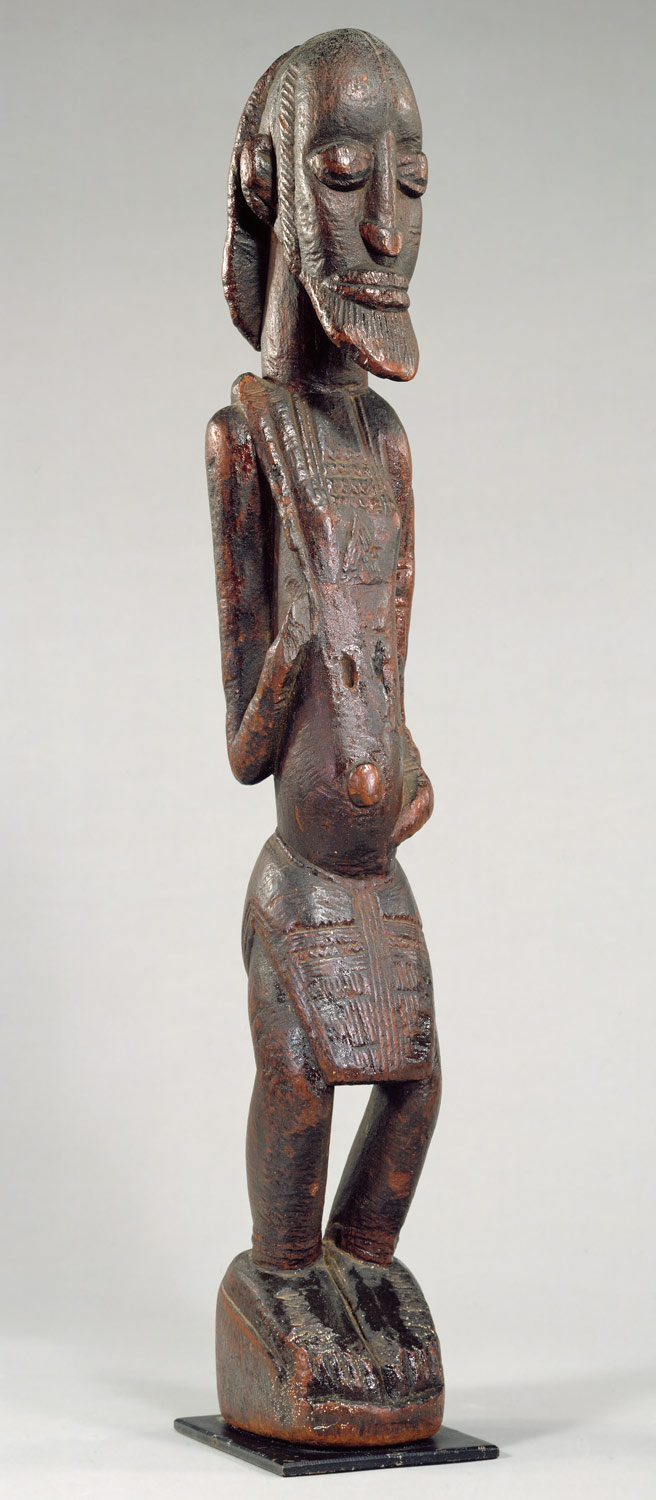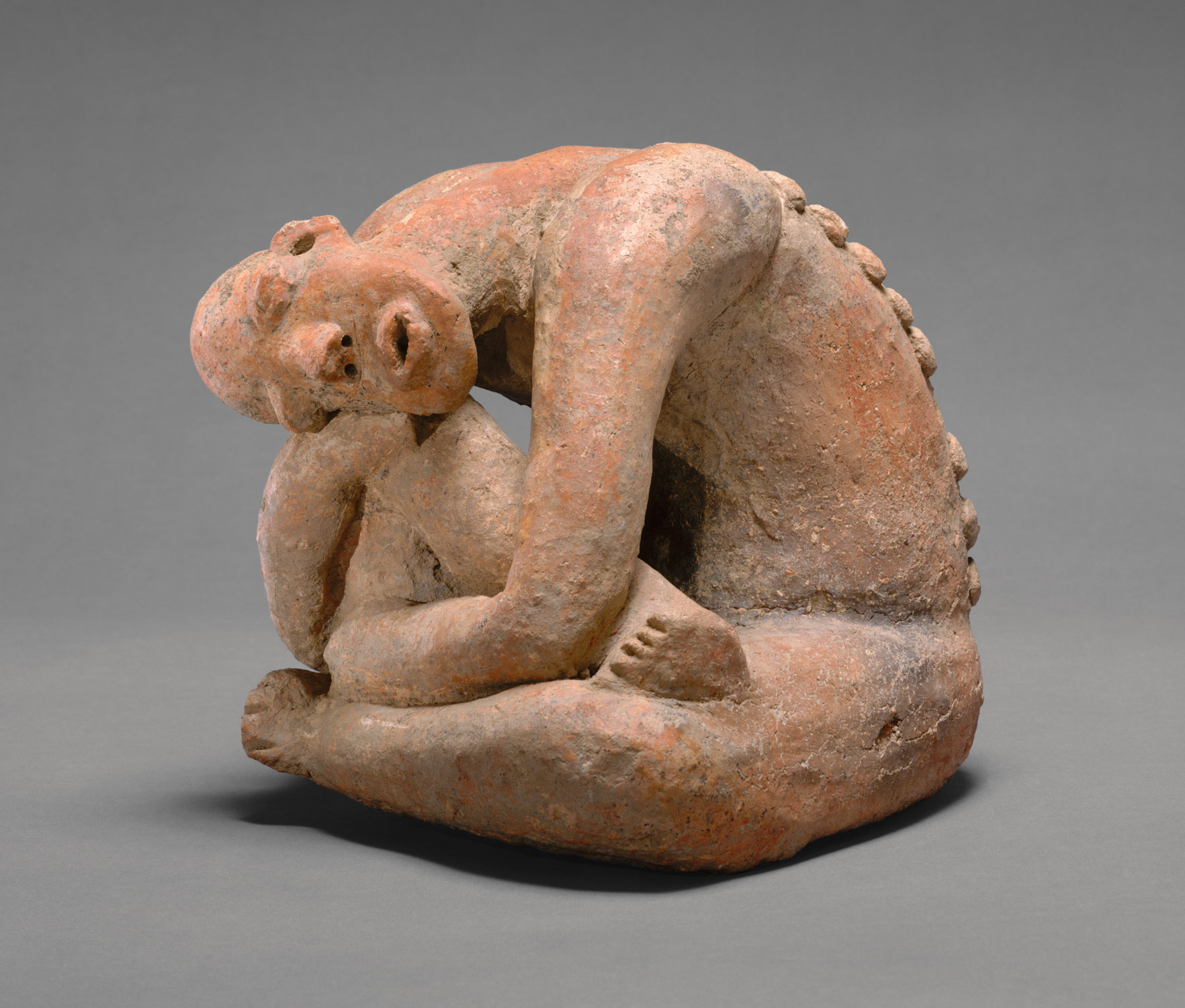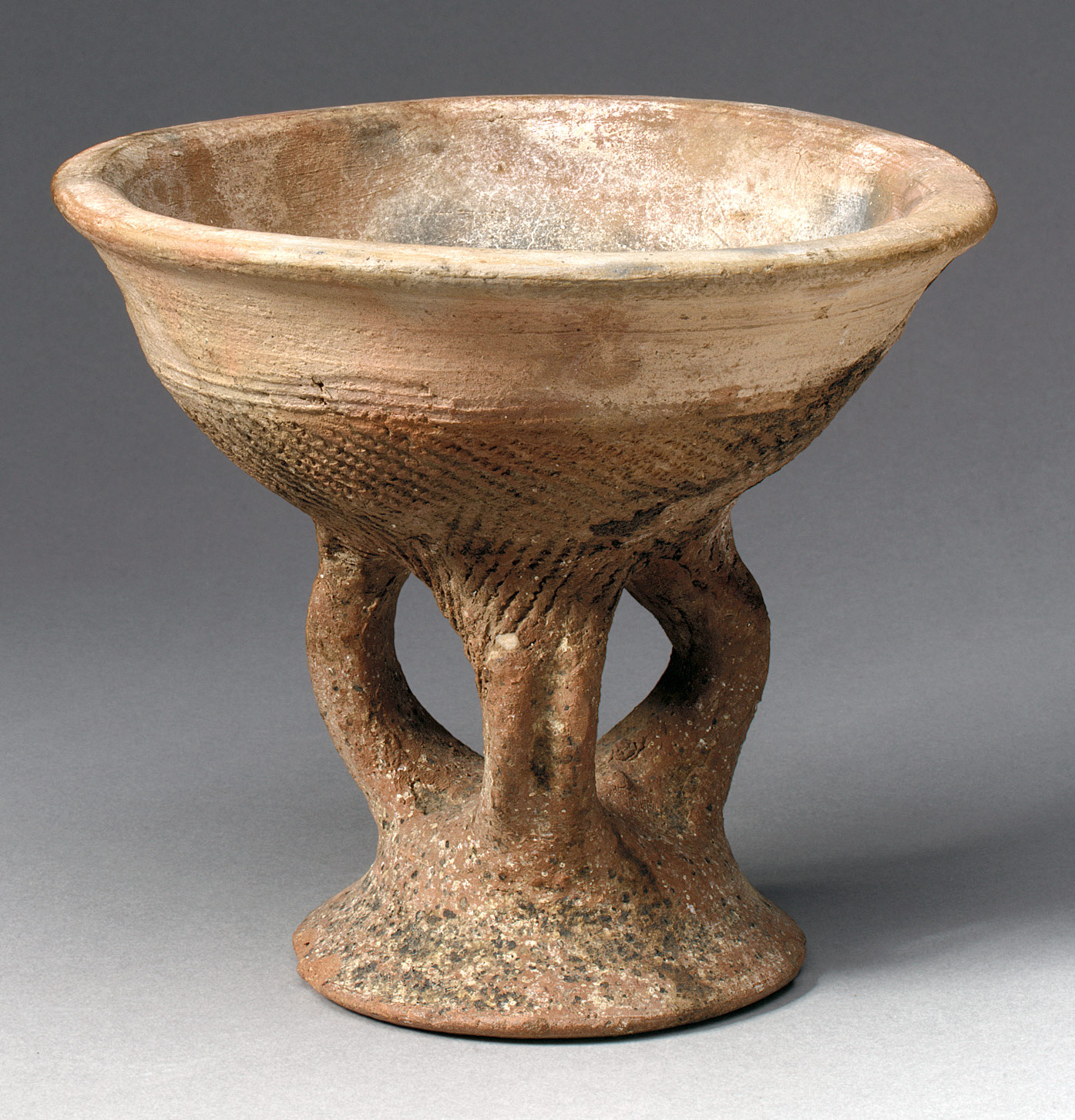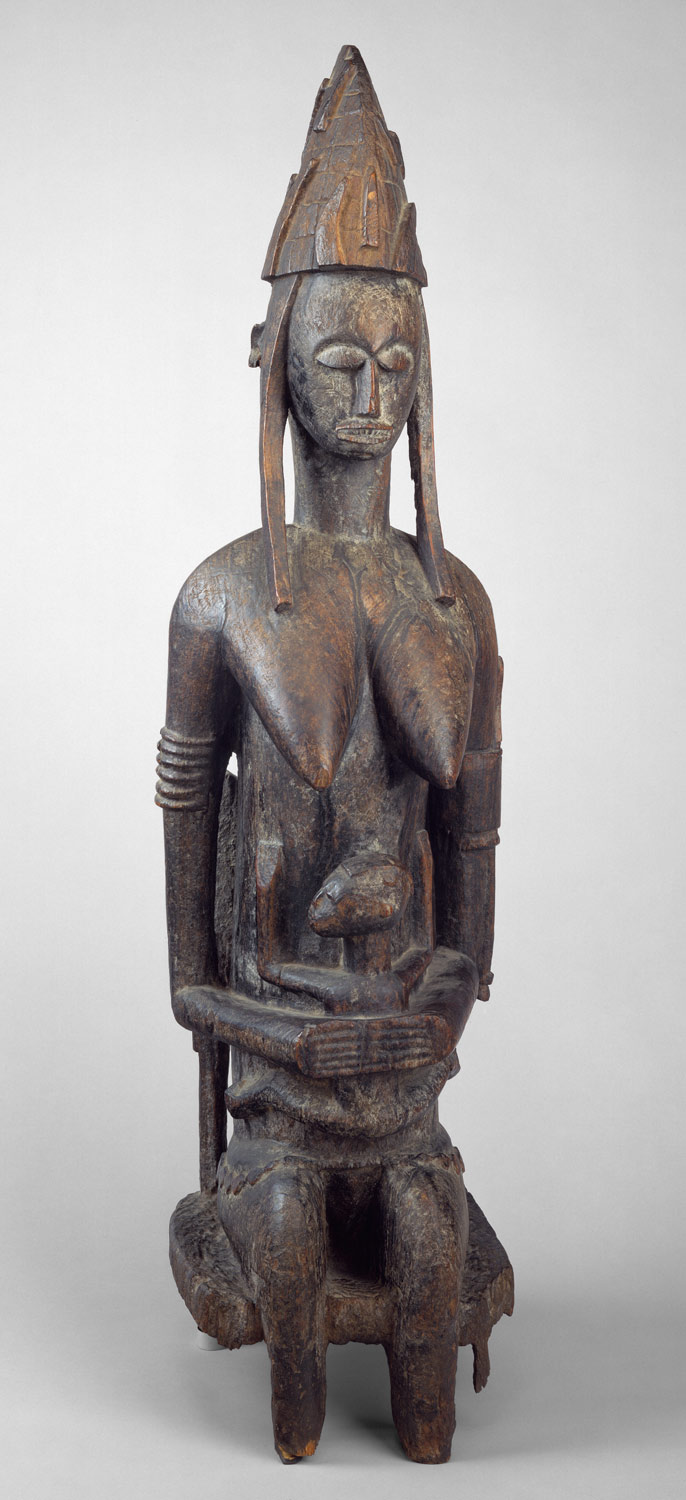The influence of Islam and the deepening networks of trade spur the growth of several great savanna states, including the Ghana, Mali, and Songhai empires. Further development of metallurgy contributes to both material wealth and artistic production, and Arab reports depict the Ghana empire as the “Land of Gold.” As well as stimulating trade, Islam sparks great cultural and artistic innovation, producing newly syncretic mixes of distinctive regional and Islamic traditions. In 1324–25, the ruler Mansa Musa brings the wealth of the Mali empire to the attention of Europe, North Africa, and Arabia when he completes a pilgrimage to Mecca. Architectural traditions are transformed during the Mali empire. The construction of enormous adobe mosques such as those at Jenne and Timbuktu dates to the thirteenth century. The mosques standing today in West Africa are the product of long histories of construction and reconstruction. They nevertheless reflect the economic conditions, cultural histories, and architectural traditions of the medieval empires from which they originated.
Western and Central Sudan, 1000–1400 A.D.
Timeline
1000 A.D.
1100 A.D.
1100 A.D.
1200 A.D.
1200 A.D.
1300 A.D.
1300 A.D.
1400 A.D.
Overview
Key Events
-
ca. 1054
Abu Bakr, military leader of the Almoravids, an Islamic Berber sect, recaptures Audaghost from the Ghana empire. Repeated Almoravid incursions, aimed at seizing control of the trans-Saharan gold trade, disrupt Ghana’s dominance of the trade routes.
-
ca. 1076
Kumbi Saleh, an important mercantile and political center of the Ghana empire, is besieged by Almoravids.
-
ca. 11th century
Abu ‘Ubayd al-Bakri, a Moorish nobleman from Córdoba, Spain, chronicles the history of ancient Ghana. Having no personal contact with the area, he bases his writings upon the reports of Muslim travelers and traders, compiling works such as The Book of Routes and Kingdoms.
-
ca. 11th century
The ruler of Kanem state in central Sudan converts to Islam.
-
11th century
Songhai peoples in Gao, capital of Songhai state, become Muslims.
-
11th century
The Sefawa dynasty establishes a capital at Njimi and controls the trade in ivory, ostrich feathers, and slaves.
-
11th–15th/16th century
Resisting conversion to Islam, Tellem people migrate from the Inland Niger Delta and Jenne-Jeno to the Bandiagara Escarpment.
-
ca. 1100
Tuareg traders establish the city of Timbuktu north of Jenne along the Niger River. Timbuktu will later achieve enduring fame as a center of Islamic learning. The Sankore, Djinguere Ber, and Sidi Yahia mosques are among Timbuktu’s most famous religious and scholarly institutions.
-
ca. 1180–1230
Under the Kante dynasty, the Soso kingdom expands to absorb much of ancient Ghana.
-
ca. 12th century
Gao becomes an important trading center of the Songhai state due to its favorable geographic location, bordering both the Sudan and Sahel and enjoying access to the Niger River. The city is said to have replaced an older Songhai center called Kukiya. Gao is governed at this time by the Dia dynasty.
-
ca. 1230–1235
The defeat of Soso by the legendary Mandinka prince Sundiata Keita, “the hungering lion,” marks the birth of the Mali empire. Both historical and folk hero to Mande-speaking peoples, Sundiata and his victory over the Soso king Sumanguru Kante are still celebrated today as a thriving oral tradition. Sundiata is said to have ruled Mali until his death in 1255.
-
ca. 13th century
A clan breaks away from the troubled dynasties of the Kanem kingdom in central Sudan. Settling to the southwest of Lake Chad, this splinter population becomes the Borno kingdom. In the fifteenth century, Borno establishes trade links with the Hausa, supplying salt and horses in exchange for Akan gold. The Hausa are peoples born of the encounter between southern Saharan nomads and local mixed farmers of the northern Nigerian savanna.
-
ca. 13th century
Muslim Soninke found the city of Jenne in the Inland Niger Delta, a site that will grow to become one of the most famous centers in the region. (Oral tradition maintains that Jenne was established much earlier, during the eighth century.) The Great Mosque is dedicated around this time by Koi Konboro, the twenty-first king of Jenne and the first to convert to Islam. Politics dictate that the mosque be rebuilt more than once, and its original appearance is no longer certain. The remarkable adobe mosque that stands there today was erected in 1906–7.
-
1312
Mansa Kankan Musa I becomes emperor of Mali, guiding the empire through its most prosperous years, enhancing trade, expanding borders, and sponsoring mosques. While undertaking a spectacular pilgrimage to Mecca in 1324–25, he stops en route in Cairo, where he dispenses so much gold that the precious metal is devalued for years. Returning to Mali in 1325, Musa is informed that his forces have just conquered the kingdom of Gao, where he is said to have subsequently dedicated a mosque. Djinguere Ber at Timbuktu is the most famous mosque traditionally associated with Mansa Musa. He is represented holding gold nuggets on a map dated to 1375, drawn in Spain.
-
ca. 1352
Ibn Battuta, renowned global traveler and writer, spends a year in Mali and records his observations. Although Mansa Musa is deceased by this time, the empire is still vigorous. Battuta is especially impressed with the strict order and justice enforced by the resident Malian king.
-
14th–15th century
Gao and the western part of Songhai state are brought within the boundaries of Mali during the fourteenth century. But the greater part of Songhai remains beyond Mali’s tax-collecting orbit. With the decline of Mali in the fifteenth century, Songhai shows its independence. Under Sonni ‘Ali the Great (r. 1464–92), the Songhai become an empire, totally eclipsing Mali. Sonni ‘Ali captures Timbuktu in 1468. The Songhai empire collapses with the Moroccan invasion of 1591.
Citation
“Western and Central Sudan, 1000–1400 A.D.” In Heilbrunn Timeline of Art History. New York: The Metropolitan Museum of Art, 2000–. http://www.metmuseum.org/toah/ht/?period=07®ion=afu (October 2001)
Related
Map
